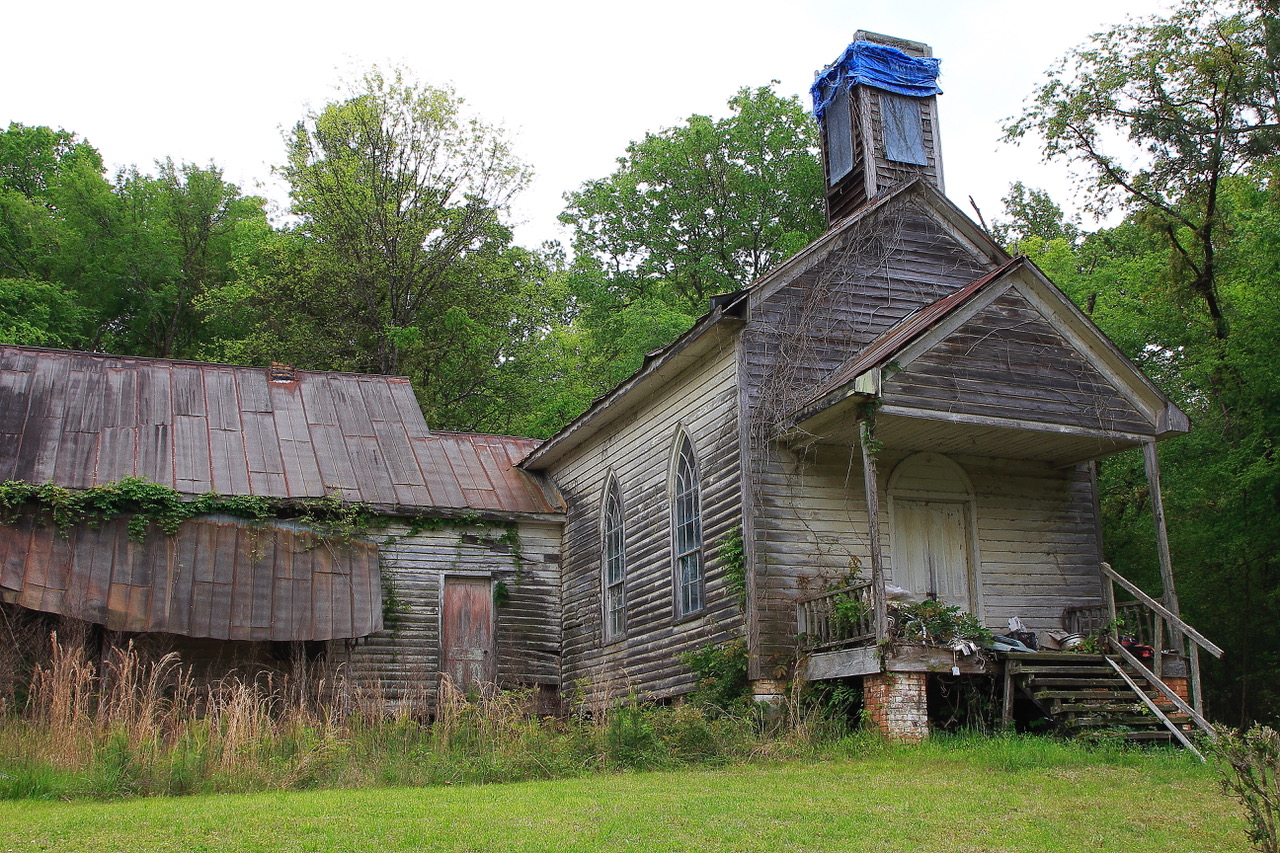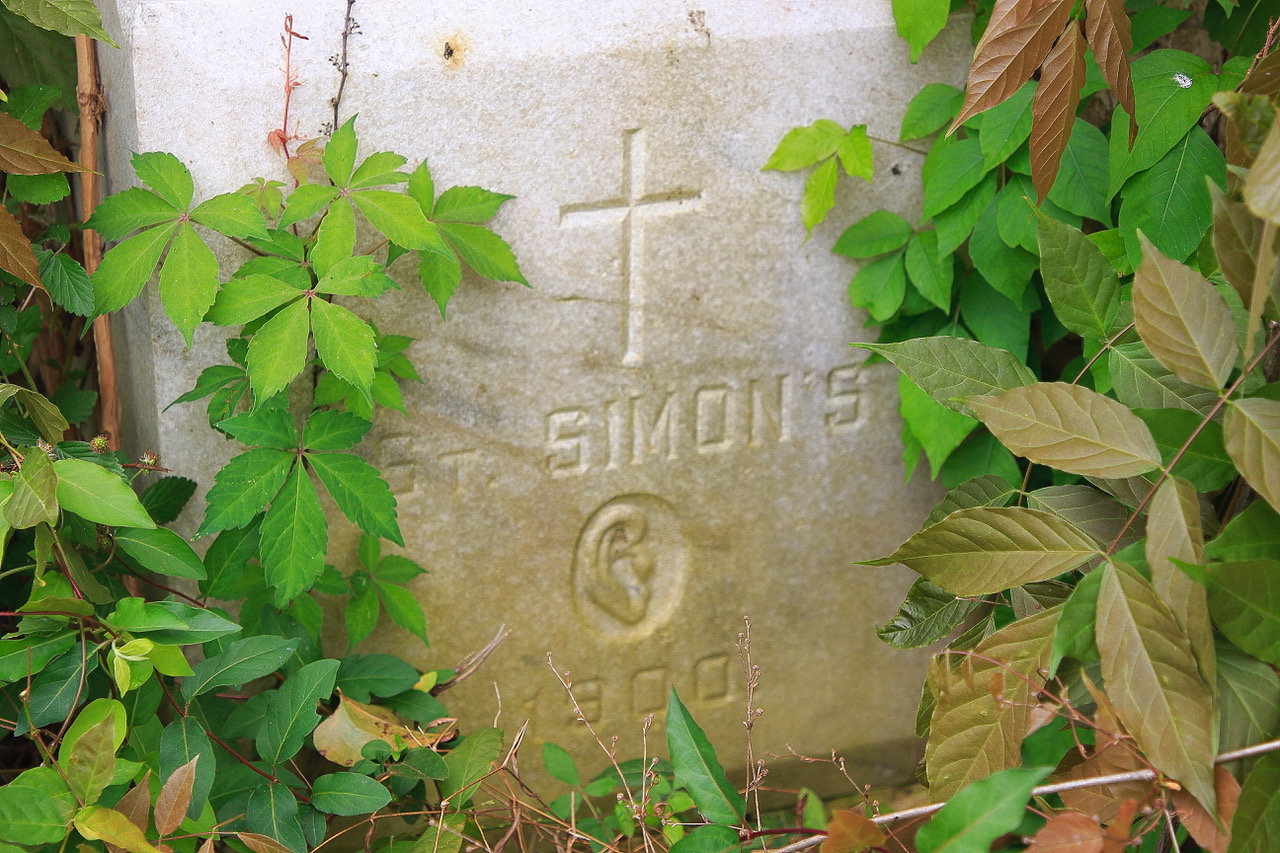When A Church Dies
July 6, 2023By Tom Poland
Some linger in woods. Some stand, for now, at the end or side of a dirt road. Some hide behind other buildings, and some haunt the edge of hamlets and villages.
Abandoned churches. How does a church die? I know that things change, that people move away, that often an elderly congregation has no youth to replace it and that towns die and an exodus takes place. People leave a church when it’s no longer possible to carry on. I like to think that when that day of dread arrives, a congregation of three or four sings a hymn, prays, and then cries as they shut the door for the last time.

Bereft her steeple, the old church wears a sash of blue.
In the past few years I’ve photographed abandoned churches in South Carolina and Georgia, my province of Georgialina. My wanderings have taken me to churches named Friendship in Georgia and Dothan in an extinct South Carolina community known as Morgana. Morgana, say it again. What a beautiful word as in Fata Morgana, a mirage, and what you see here is a kind of mirage, a church that is not a church anymore. You see the shell of a church. A church dies when its congregation is no more.
Some cling to life through the kindness of others such as Barrs Chapel in Edgefield County. I read that services take place there twice a year, once in autumn and at Christmas when a candlelight service takes place. And I’ve stopped by Friendship Baptist Church near Tignall, Georgia. A long steel cable runs from the church to a tree. Best I figure that’s to keep it from falling over.

It’s easy to miss the marble cornerstone.
Many old churches still have pews and a piano. (I heard the beautiful and haunting tale of a forester who taught himself to play a piano in an abandoned church.)
Some churches command me to visit them. On A Sunday in April I drove to Peak, South Carolina. I was on a quest. I sought the St. Simon’s Episcopal Church, but finding it wasn’t easy. The old church hid behind a home and you had to know just where and when to look or you’d miss it. I missed it. Missed it more than once. Flustered I parked near a building to figure out what to do when by a stroke of good luck, I spotted a gentleman and asked him where it was. A pillar of the community, Dr. Carroll Pinner, led me to the church.
Engraved into the church’s cornerstone wreathed in vines is 1900, a cross, and an ear. The old carpenter gothic church still stands. She’s ailing though. Members of the Pinner family, Peak community, and others hope to restore the church but help is needed. More on that to come.
The church is beautiful and historic. It’s had a significant impact on civil rights in South Carolina and has ties to astronaut Maj. Gen. Charles F. Bolden. With the help of a friend of St. Simon’s Church, Buddy Johnson of Little Mountain, I hope to sit down with the Reverend Simon P. Bouie to get details on the church’s history and legacy. Buddy sent me a document that says the church had its beginnings as an African American Episcopal congregation in 1889 under the leadership of Reverend G.E. Howell.
It may be, I’m told, the earliest instance of an integrated school in South Carolina, long before any civil rights movement began. I’ll be returning to this story in a magazine feature where I will be armed with much more information. For now “When A Church Dies” is a sad familiar refrain other inactive and abandoned churches know so well. As Peak’s population declined, attendance at St. Simon’s dropped. By the 1920s regular services were pretty much a thing of the past.
As my Grandmother Walker faced the inevitable, she told me more than once that all her friends were in the ground. That’s how an abandoned church must feel. All its members are in the ground. It falls on others, latecomers, you could say, to step forward and save places of import and charisma. St. Simon’s has both and it deserves to be saved and restored.
Georgia native Tom Poland writes a weekly column about the South, its people, traditions, lifestyle, and culture and speaks frequently to groups in the South. Governor Henry McMaster conferred the Order of the Palmetto upon Tom, South Carolina’s highest civilian honor, stating, “His work is exceptional to the state.” Poland’s work appears in books, magazines, journals, and newspapers throughout the South.
Visit Tom’s website at www.tompoland.net
Email him at [email protected]


















